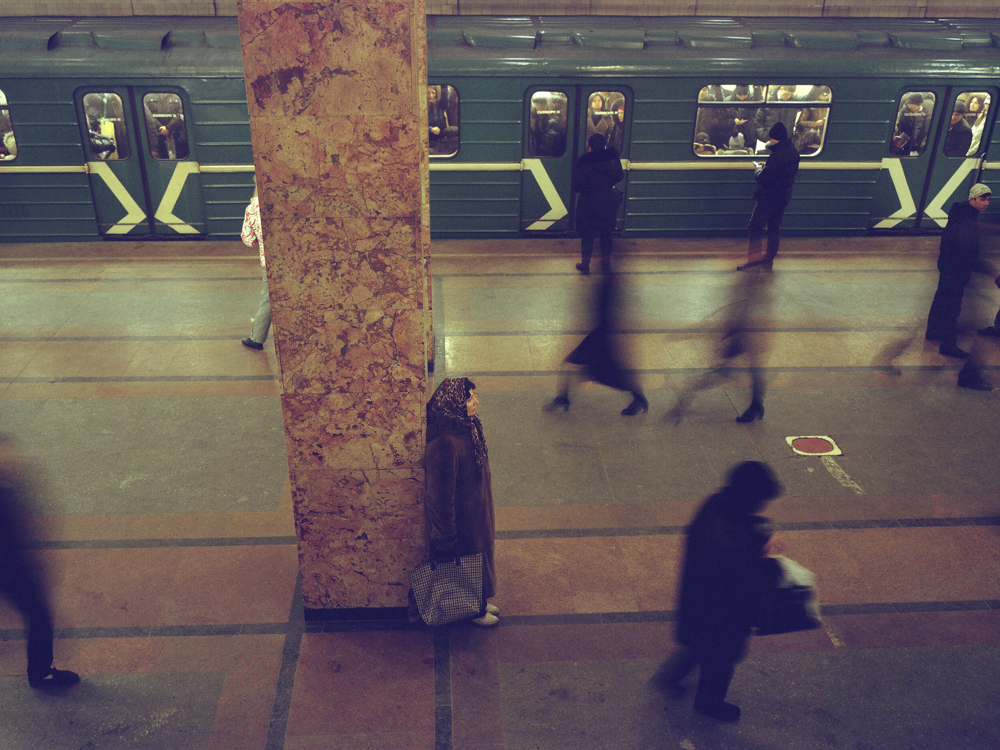- The Moscow Metro is one of the busiest metro systems in the world, transporting 9 million people a day via trains.
- Many of the Moscow Metro’s 200 stations are ornately designed with chandeliers, glamorous artwork, and intricate stained glass windows.
- Photographer Tomer Ifrah spent three months taking pictures of Moscow residents on their daily commute on the subway.
Moscow’s metro system is known for its expansive reach and high ridership – 9 million people take the train across Russia’s capital each day.
But the Moscow Metro is also known for its ornate design and glamorous decorations. Its 200 stations around the city feature chandeliers, reflective marble walls, and cavernous arching hallways. Some stations are decorated with intricate stained glass windows and mosaic artwork and sculptures in the socialist realism tradition.
Israeli photographer Tomer Ifrah spent three months documenting Moscow residents on their daily commutes, juxtaposing the bustle of the crowds with their romantic surroundings. The metro is “one of the few places in the city which brings together people from all parts of the society,” Ifrah told Business Insider.
Ifrah plans to publish his photos in a book showcasing everyday life in three post-Soviet countries. You can check out more of his work at his website and his Instagram account.
Read on to see what a typical commute is like on the Moscow Metro.
The Moscow Metro opened in 1935, making it one of the oldest metro systems in the world.

Source: Moscow Metro
The system comprises 214 stations around Moscow and other towns in the region.

Source: Moscow Metro
More than 9 million passengers take the metro every weekday.

Source: Moscow Metro
"The first time I entered one of the metro stations in Moscow, I was immediately captured by its magic," Ifrah wrote in an article on Lens Culture.

Source: Lens Culture
A single ride on the metro costs between $0.63 and $0.98.

Source: Russland Journal
According to City Metric, the Moscow Metro is the fifth-busiest metro system in the world.

Source: City Metric
It's the busiest outside of Asia.

Source: City Metric
"The artfully designed stations, many first built in the 1930s, are filled with soft, warm light," Ifrah wrote on Lens Culture.

Source: Lens Culture
The metro was considered a feat of Soviet engineering when it first opened.

Source: Calvert Journal
Many of the Moscow Metro stations have grand arching hallways and elaborate decorations.

The Calvert Journal called the system "a tourist attraction in its own right."

Source: Calvert Journal
And Rough Guides called it "a walking museum of Communist design."

Source: Rough Guides
Ifrah's pictures suggest a "cinematic otherworldly dreamscape," Don't Take Pictures wrote.

Source: Don't Take Pictures
Almost all of the Moscow Metro's stations are underground, but a small handful emerge to ground level.

Source: Urban Rail
Moscow's temperatures often dip into single digits in the winter, so you'll often see passengers bundled up in fur coats.

The Moscow Metro system collectively has more than 40 miles of escalators.

Source: The Washington Post
Some of Moscow's stations are among the deepest underground in the world.

Source: Amazing Planet
Ifrah told Don't Take Pictures that Moscow commuters don't talk much, and often the only sounds he heard were of footsteps and passing trains.

Source: Don't Take Pictures
"The subjects I find most interesting to photograph are mainly from everyday life —places that we all pass through, sometimes quickly and without noticing all the details," Ifrah said.

Source: Lens Culture
Ifrah said the Moscow Metro is "one of the few places in the city which brings together people from all parts of the society."

Moscow traffic is notoriously bad. Driving to work often takes an hour or more, which helps explain the high metro ridership.

Source: Understand Russia
"The visual aspect of the Moscow metro was very impressive—the light, people's style of dress, and the Soviet symbols that were everywhere," Ifrah said.

Source: Don't Take Pictures
"In the harsh Russian winter, my eye was drawn to the distinctive, tactile clothing worn by men and women to ward off the cold," Ifreh said.

Source: Lens Culture
Ifrah said that the commuters' style of dress "reminded me of images of classic films and this is what I was trying to capture."

Source: Calvert Journal
"The unbelievable pace, the unique sound, and the atmosphere of the stations fascinated me."

Source: Calvert Journal
"I find no bigger challenge and reward than to capture a photograph that is meaningful to me from such seemingly ordinary moments."

Source: Lens Culture

